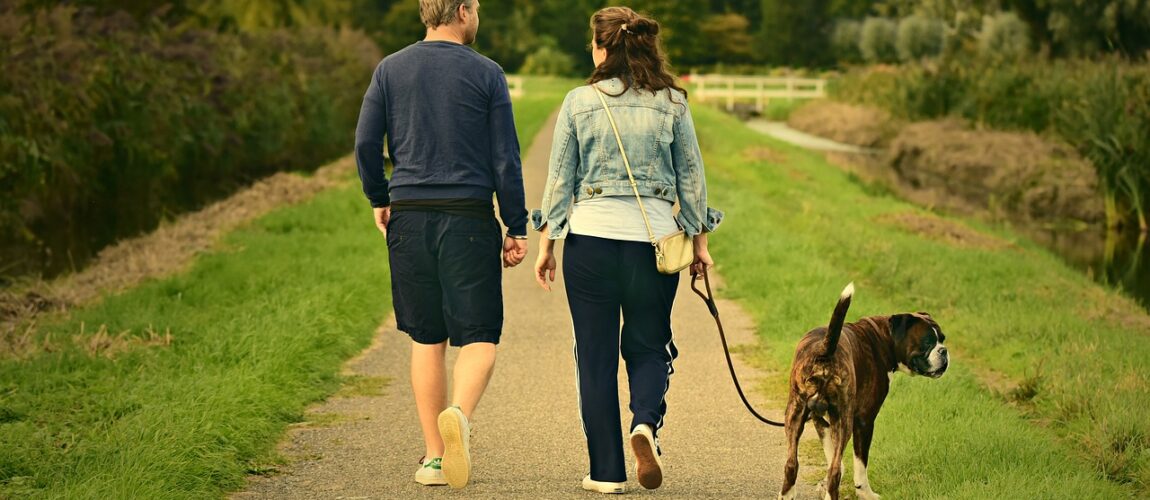
Introduction
Walking is one of the simplest, most accessible, and most effective forms of exercise available. It requires no special equipment or training, can be done anywhere, and offers a multitude of physical, mental, and emotional benefits. This article will delve into the history and background of walking as an exercise, compare it with other forms of physical activity, outline essentials and important things to know while practicing walking, and detail the benefits observed from walking over various time periods.
History, Background, and References
Walking is one of the most ancient forms of human movement. Our ancestors relied on walking for survival, migrating across continents, hunting, gathering, and exploring new territories. As societies evolved, walking remained a fundamental activity, integral to daily life.
In ancient Greece, walking was a key part of the philosopher’s routine. Aristotle and his students, known as the Peripatetics, would walk and discuss ideas. Similarly, in ancient Rome, citizens would walk through public spaces to socialize and conduct business.
In modern times, walking has been recognized for its health benefits. The famous nurse Florence Nightingale advocated for walking as a means to improve health and prevent disease. In the 20th century, with the advent of cars and sedentary jobs, walking declined, but public health campaigns in recent decades have revived interest in walking as an essential form of exercise.
References to walking can be found in numerous cultures and literatures, from the leisurely “promenade” in Europe to the daily “constitutional” in America. Today, walking is promoted by health organizations worldwide, including the World Health Organization (WHO) and the American Heart Association (AHA), for its myriad health benefits.

Comparison with Other Physical Exercises
While walking is a highly beneficial form of exercise, it differs from other physical activities in several ways:
- Running: Running burns more calories per minute and improves cardiovascular fitness more rapidly than walking. However, it also puts more stress on the joints and muscles, increasing the risk of injury.
- Cycling: Cycling is an excellent low-impact exercise that can cover longer distances. It requires a bicycle and can be more intense, improving cardiovascular health and muscle strength in the lower body.
- Swimming: Swimming provides a full-body workout and is easy on the joints, making it ideal for those with joint issues. However, it requires access to a pool.
- Strength Training: Strength training builds muscle mass and strength but usually requires equipment and knowledge of proper techniques to avoid injury.
- Yoga: Yoga improves flexibility, balance, and mental well-being. It can be practiced anywhere but typically involves a series of specific poses and breathing techniques.
Walking, in comparison, is low-impact, accessible, requires no special equipment, and offers both physical and mental health benefits without the high risk of injury associated with more intense activities.
Essentials and Important Things to Know While Practicing Walking
Footwear: Proper walking shoes are essential. Look for shoes with good arch support, a firm heel, and flexible soles to prevent injuries and ensure comfort.
Clothing: Wear comfortable, weather-appropriate clothing. Moisture-wicking fabrics are ideal for warm weather, while layers are suitable for colder climates.
Hydration: Stay hydrated by drinking water before, during, and after your walk, especially in hot weather.
Posture: Maintain good posture while walking. Keep your head up, shoulders relaxed, and swing your arms naturally. Engage your core muscles and walk with a natural stride.
Safety: Be aware of your surroundings. Walk in well-lit, safe areas, and if walking in nature, be mindful of the terrain and wildlife. If walking at night, wear reflective clothing or carry a flashlight.
Pace and Duration: Start with a comfortable pace and gradually increase your speed and distance. Aim for at least 150 minutes of moderate-intensity walking per week, as recommended by health organizations.
Warm-up and Cool-down: Warm up with a few minutes of easy walking and stretching before increasing your pace. Cool down with a slower walk and additional stretching to prevent muscle stiffness.

Physical, Mental, and Overall Changes Over Time
1 Week of Walking:
- Physical: Improved circulation, increased energy levels, and slight reduction in muscle stiffness.
- Mental: Enhanced mood due to the release of endorphins, reduced stress levels, and improved sleep quality.
- Overall: Increased motivation to continue walking as initial benefits are felt.
1 Month of Walking:
- Physical: Noticeable improvement in cardiovascular health, reduced blood pressure, weight loss, and increased muscle tone in the legs and core.
- Mental: Greater mental clarity, reduced symptoms of anxiety and depression, and enhanced cognitive function.
- Overall: Development of a walking routine, increased endurance, and improved overall well-being.
2 Months of Walking:
- Physical: Significant improvements in stamina and endurance, further weight loss, better balance and coordination, and stronger immune system.
- Mental: Greater emotional resilience, better stress management, and improved self-esteem.
- Overall: Establishment of a consistent walking habit, integration of walking into daily life, and noticeable overall health improvements.
6 Months of Walking:
- Physical: Enhanced cardiovascular fitness, significant weight management, improved muscle strength and tone, and reduced risk of chronic diseases.
- Mental: Sustained mental health benefits, including reduced anxiety, improved mood, and better cognitive function.
- Overall: A more active lifestyle, greater physical and mental resilience, and an overall sense of well-being and vitality.
1 Year of Walking:
- Physical: Optimal cardiovascular health, ideal weight maintenance, strong muscles and bones, reduced risk of diseases like diabetes and heart disease, and improved longevity.
- Mental: Long-term mental health benefits, including better memory, concentration, and emotional well-being.
- Overall: Transformation into a healthier, more active, and happier individual with a significantly improved quality of life.

99 Benefits of Walking
Physical Health Benefits:
- Improved cardiovascular health.
- Lower blood pressure.
- Reduced risk of heart disease.
- Enhanced lung capacity.
- Better blood sugar control.
- Reduced risk of type 2 diabetes.
- Increased muscle strength.
- Improved bone density.
- Enhanced joint flexibility.
- Lower risk of osteoporosis.
- Better balance and coordination.
- Increased stamina and endurance.
- Weight management.
- Reduced body fat.
- Improved metabolism.
- Enhanced immune system.
- Faster recovery from illnesses.
- Reduced risk of stroke.
- Improved cholesterol levels.
- Better digestion.
Mental Health Benefits:
- Reduced stress levels.
- Improved mood.
- Enhanced emotional well-being.
- Reduced symptoms of depression.
- Lower anxiety levels.
- Better sleep quality.
- Improved cognitive function.
- Enhanced memory.
- Increased creativity.
- Better problem-solving skills.
- Greater mental clarity.
- Improved concentration.
- Enhanced self-esteem.
- Greater sense of accomplishment.
- Better emotional resilience.
- Improved overall mental health.
- Increased social interaction.
- Reduced feelings of loneliness.
- Enhanced quality of life.
- Greater sense of purpose.
Long-term Health Benefits:
- Reduced risk of chronic diseases.
- Lower risk of certain cancers.
- Improved longevity.
- Better management of arthritis.
- Reduced risk of falls in older adults.
- Improved recovery from surgeries.
- Enhanced physical rehabilitation.
- Better pain management.
- Increased functional independence.
- Greater mobility in older age.
Lifestyle and Daily Life Benefits:
- Increased energy levels.
- Enhanced productivity.
- Better time management.
- Greater sense of routine.
- Improved daily functioning.
- Better work-life balance.
- Increased physical activity.
- Greater motivation for other exercises.
- Enhanced appreciation for nature.
- More opportunities for socializing.
Environmental and Community Benefits:
- Reduced carbon footprint.
- Lower pollution levels.
- Increased community engagement.
- Greater awareness of local environment.
- Enhanced sense of community.
- More opportunities for outdoor activities.
- Better understanding of local geography.
- Increased support for local businesses.
- Improved safety in neighborhoods.
- Enhanced public health.
Financial Benefits:
- Cost-effective exercise.
- Reduced healthcare costs.
- Lower transportation costs.
- Fewer medical expenses.
- Increased savings.
- Greater financial stability.
Miscellaneous Benefits:
- Better posture.
- Improved flexibility.
- Enhanced body awareness.
- Greater appreciation for health.
- Better time for reflection.
- Increased mindfulness.
- Greater connection with nature.
- Improved adaptability.
- Enhanced problem-solving skills.
- Increased resilience.
- Better decision-making.
- Greater overall happiness.
- Enhanced quality of relationships.
- Increased sense of gratitude.
- Better goal-setting skills.
- Greater sense of achievement.
- Enhanced personal growth.
- Better management of life changes.
- Greater adaptability to stress.
- Improved self-discipline.
- Greater sense of community.
- Increased overall life satisfaction.
- Enhanced sense of fulfillment.

Conclusion
Walking is a powerful tool for improving physical health, mental well-being, and overall quality of life. Its simplicity and accessibility make it an ideal exercise for people of all ages and fitness levels. By understanding the numerous benefits and incorporating walking into your daily routine, you can experience significant positive changes in a short period. Whether you aim to boost your cardiovascular health, manage stress, or enjoy the outdoors, walking offers a holistic approach to wellness. Start today and take the first step towards a healthier, happier life.
Pics courtesy @ Pixabay
Also Read:
A Simple Guide to Healthy Eating for All Ages.
How Women Can Lead a Healthy Life and Maintain Balance in Physical and Mental Health.
At AddtoYou.org, our content is crafted by a dedicated team of health enthusiasts, nutrition experts, fitness trainers, and mental health professionals. Together, we bring a wealth of knowledge and experience to help women lead healthier, more balanced lives. Our team is passionate about sharing practical tips and insights on physical well-being, mental health, and nutritious eating. We are committed to providing evidence-based advice and inspiring you to achieve harmony in mind, body, and soul. Join us on this journey to wellness and discover how you can add more health and happiness to your life.

[…] “99 Reasons to Start Walking: A Comprehensive Health and Wellness Guide” […]